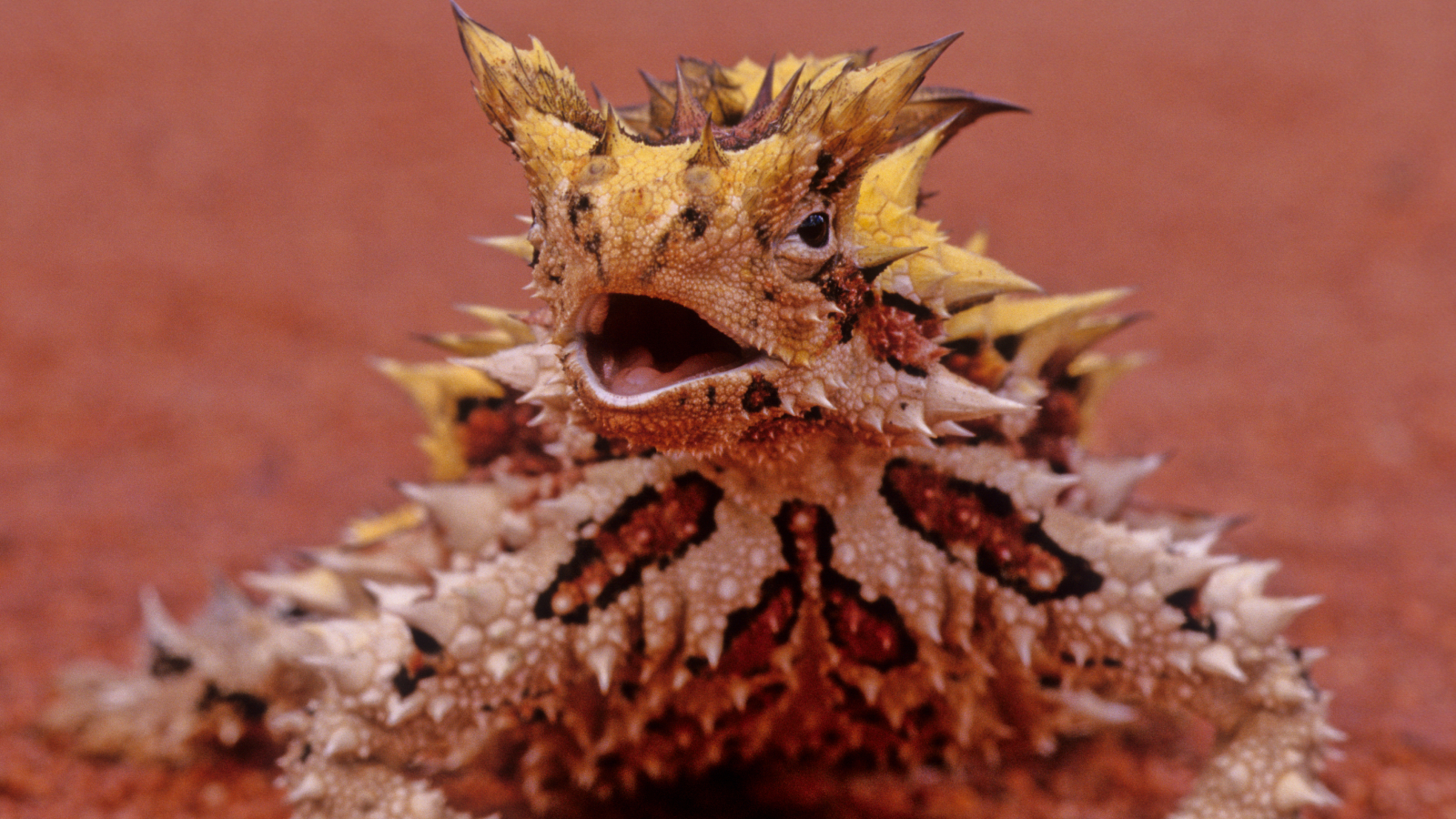
Name: Thorny devil (Moloch horridus)
Where it lives: Australia
What it eats: Ants
Why it's awesome: Thorny devils are native to Australia and live in the country's arid scrubland and interior desert. These small lizards grow to 8 inches (20 centimeters) long and have evolved an impressive set of defenses, including an appendage on the back of the necks that acts as a "'false head."
When threatened, the lizards tuck their real head down between their front legs, leaving the fake head exposed while protecting the real head.
These lizards' defenses don't stop there. Their bodies are covered in spikes, which are the size of rose thorns and are thought to deter predators by making the lizards difficult to capture, bite and swallow.
Thorny devils can also inflate their chests to make themselves look larger when faced with a threat. When they're out in the open — either looking for food or mates — they also have a slow and jerky walk, which is thought to confuse predators. This is because moving slowly and intermittently may help the lizards from activating a predator’s chase-and-attack response, which can happen when they spot quick-fleeing prey.
Devils are well-adapted to their hot, harsh environment. In extreme temperatures, they bury themselves in sand to protect themselves from the sun. They then use channels on their skin, located between their scales, to draw moisture from damp sand and transport it to their mouths like a straw.
They can also change color to help them regulate their body temperature and metabolism. In the cooler mornings, the lizards are a drab brown, becoming a lighter yellow as the temperature rises and they become more active. The lighter coloring likely helps reflect the sun and prevents them from overheating. However, they can also change color quickly in order to camouflage themselves.
Thorny devils are named after a human sacrifice god. Their scientific name, Moloch horridus, was inspired by John Milton's poem "Paradise Lost," which references the Canaanite god Moloch — a bloodthirsty figure that requires child sacrifices. The Latin word horridus means rough, dreadful, wild or frightful. According to research, a thorny devil was first exhibited in London by naturalist and businessman John Gould in 1840, but it was given its scientific name by zoologist John Gray in 1841, who allegedly had Milton’s epic poem in mind at the time.
In reality, though, thorny devils are harmless — unless you're a predator or an ant. They can consume thousands of the insects a day, using their sticky tongues and hard teeth to capture ants.







